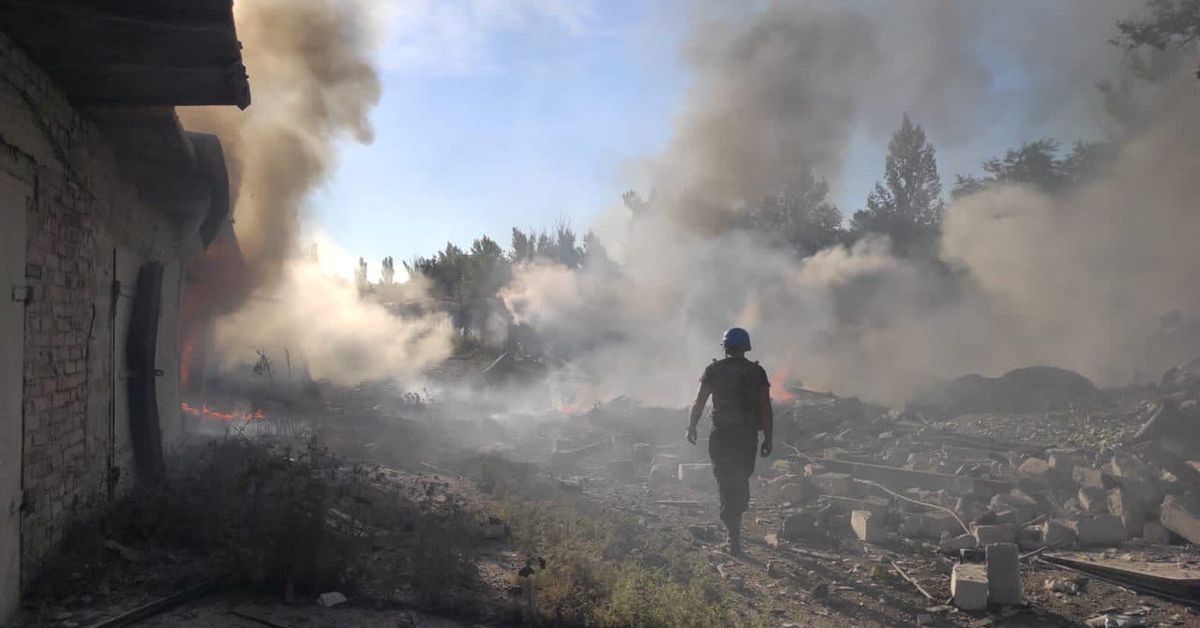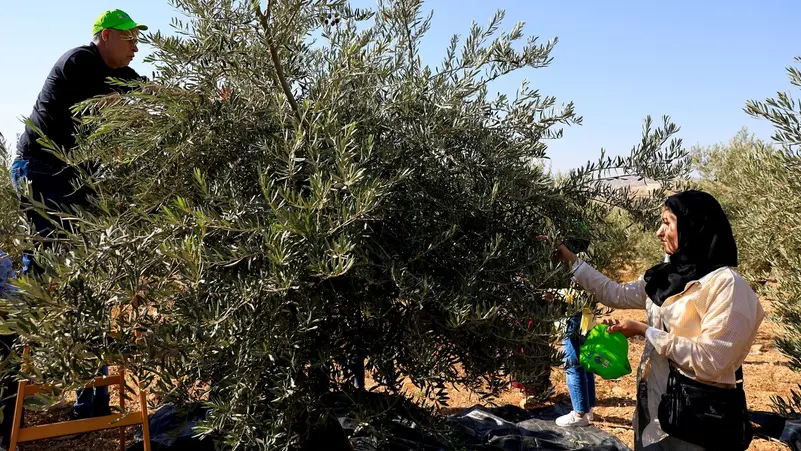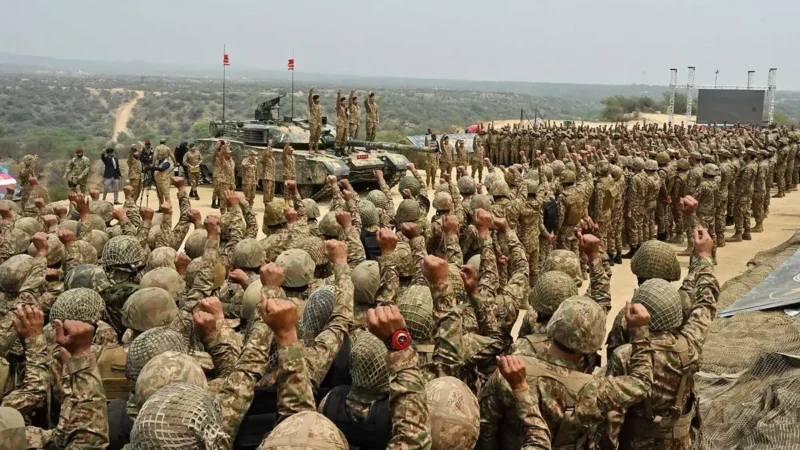Explainer: Blood, treasure and chaos: the cost of Russia’s war in Ukraine

A rescuer walks among debris at a site of a residential area destroyed by a Russian military strike, as Russia’s attack on Ukraine continues, in the town of Toretsk, Donetsk region, Ukraine July 27, 2022. Press service of the State Emergency Service of Ukraine/Handout via REUTERS
LONDON, July 28 (Reuters) – Russia’s Feb. 24 invasion of Ukraine has left tens of thousands of dead, displaced millions and sown economic strife across the world.
Following are the main impacts of the war:
* DEATH
Since Feb. 24, 5,237 civilians have been recorded as killed and 7,035 as injured, though the actual casualties are much higher, the United Nations High Commissioner for Human Rights said on July 25. https://www.ohchr.org/en/press-releases/2022/07/ukraine-civilian-casualty-update-25-july-2022
Register now for FREE unlimited access to Reuters.com Register
Most of the those killed or injured were the victims of explosive weapons such as artillery, missile and air strikes, the OHCHR said.
Neither Russia nor Ukraine have given details on the military deaths in the conflict.
U.S. intelligence estimates that some 15,000 Russian soldiers have been killed so far in Ukraine and three times that wounded – equal to the total Soviet death toll during Moscow’s occupation of Afghanistan in 1979-1989.
Ukrainian military losses are also significant but probably a little less than Russia’s, U.S. intelligence believes, CIA Director William Burns said this month.
The conflict in eastern Ukraine began in 2014 after a pro-Russian president was toppled in Ukraine’s Maidan Revolution and Russia annexed Crimea, with Russian-backed forces fighting Ukraine’s armed forces.
About 14,000 people were killed there between 2014 and 2022, according to OHCHR, including 3,106 civilians. https://ukraine.un.org/sites/default/files/2022-02/Conflict-related%20civilian%20casualties%20as%20of%2031%20December%202021%20%28rev%2027%20January%202022%29%20corr%20EN_0.pdf
*MISERY
Since Feb. 24, one third of Ukrainians – which has a population of more than 41 million – has been forced from their homes, the largest current human displacement crisis in the world, according to the United Nations RefugAe agency.
There are currently more than 6.16 million refugees from Ukraine recorded across Europe, with the biggest numbers in Poland, Russia and Germany, according to the agency’s data.
* UKRAINE
Besides the human losses, Ukraine has lost control of around 22% of its land to Russia since the 2014 anexation of Crimea, according to Reuters calculations.
It has lost a swathe of coastline, its economy has been crippled and some cities have been turned into wastelands by Russian shelling. Ukraine’s economy will contract by 45% in 2022, according to the World Bank and International Monetary Fund. read more
The true dollar cost to Ukraine is unclear. Prime Minister Denys Shmyhal said this month that the total rebuild after the war would cost approximately $750 billion. It may be much more.
It is unclear how much Ukraine has spent on fighting.
* RUSSIA
The war has been expensive for Russia too – though Russia does not disclose the costs, which are state secrets.
Besides the military costs, the West has tried to punish Russia by imposing severe sanctions – the biggest shock to Russia’s economy since the 1991 collapse of the Soviet Union.
Russia’s central bank now forecasts $1.8 trillion economy will contract by 4%-6% in 2022, less than the 8%-10% contraction it forecast in April. read more
Still the impact on Russia’s economy is severe – and not yet fully clear. It has been excluded from Western financial markets, most of its oligarchs are sanctioned, and it is experiencing problems sourcing some items such as microchips.
Russia last month defaulted on its foreign bonds for the first time since the calamitous months following the 1917 Bolshevik revolution. read more
* PRICES
The invasion and Western sanctions on Russia led to steep rises in the prices of fertiliser, wheat, metals and energy, feeding into both a brewing food crisis and an inflationary wave that is crashing through the global economy.
Russia is the world’s second largest oil exporter after Saudi Arabia and the world’s biggest exporter of natural gas, wheat, nitrogen fertiliser and palladium. Shortly after Russia’s invasion of Ukraine, international oil prices spiked to their highest levels since the records of 2008.
Attempts to reduce reliance on Russian oil, gas and oil products – or even to cap their prices – have exacerbated what is already the most severe energy crunch since the Arab oil embargo in the 1970s.
After Russia cut flows through the Nord Stream 1 gas pipeline to Germany, prices for wholesale gas soared in Europe.
A complete cut off would tip the euro area into a recession, with sharp contractions in both Germany and Italy, according to Goldman Sachs.
* GROWTH
The International Monetary Fund now forecasts the world’s economy will grow 3.2% this year, down from 6.1% last year, and significantly lower than its April forecast of 3.6%, its January forecast of 4.4% and its October forecast of 4.9%. read more
Under a “plausible” alternative scenario that includes a complete cut-off of Russian gas supplies to Europe by year-end and a further 30% drop in Russian oil exports, the IMF said global growth would slow to 2.6% in 2022 and 2% in 2023, with growth virtually zero in Europe and the United States next year.
Global growth has fallen below 2% only five times since 1970 IMF Chief Economist Pierre-Olivier Gourincha said – recessions in 1973, 1981 and 1982, 2009 and the 2020 COVID-19 pandemic.
The United States is forecast to grow 2.3% in 2022 and 1.0% for 2023. The Fund deeply cut China’s 2022 GDP growth forecast to 3.3% from 4.4% in April.
Since the outbreak of war, the European Commission has downgraded GDP growth projections for the 27-nation bloc to 2.7% this year and 1.5% in 2023 from 4.0% and 2.8% respectively, from what was expected before the Russian invasion on Feb 24th.
* WESTERN WEAPONS
The United States has provided about $7.6 billion in security assistance to Ukraine since Feb. 24 including stinger anti-aircraft systems, Javelin anti-armour systems, 155mm Howitzers and chemical, biological, radiological, nuclear protective equipment. https://media.defense.gov/2022/Jul/22/2003040788/-1/-1/1/FACT-SHEET-ON-US-SECURITY-ASSISTANCE-TO-UKRAINE.PDF
The next biggest donor to Ukraine is Britain, which has provided 2.3 billion pounds ($2.8 billion) in military support. The European Union has agreed 2.5 billion euros in security assistance to Ukraine. read more
($1 = 0.8308 pounds)
Register now for FREE unlimited access to Reuters.com Register
Reporting by Guy Faulconbridge, Editing by Angus MacSwan
Our Standards: The Thomson Reuters Trust Principles.






